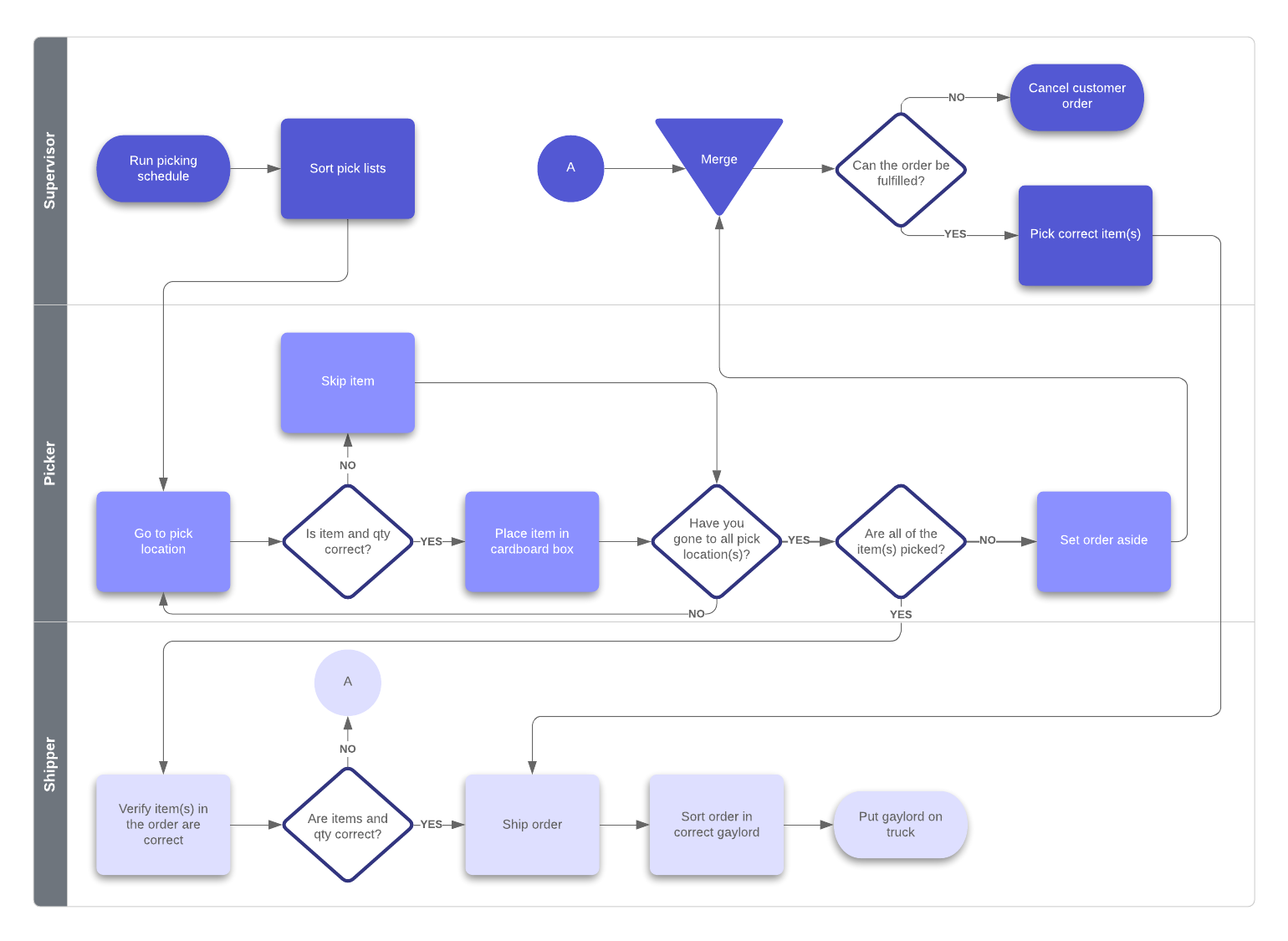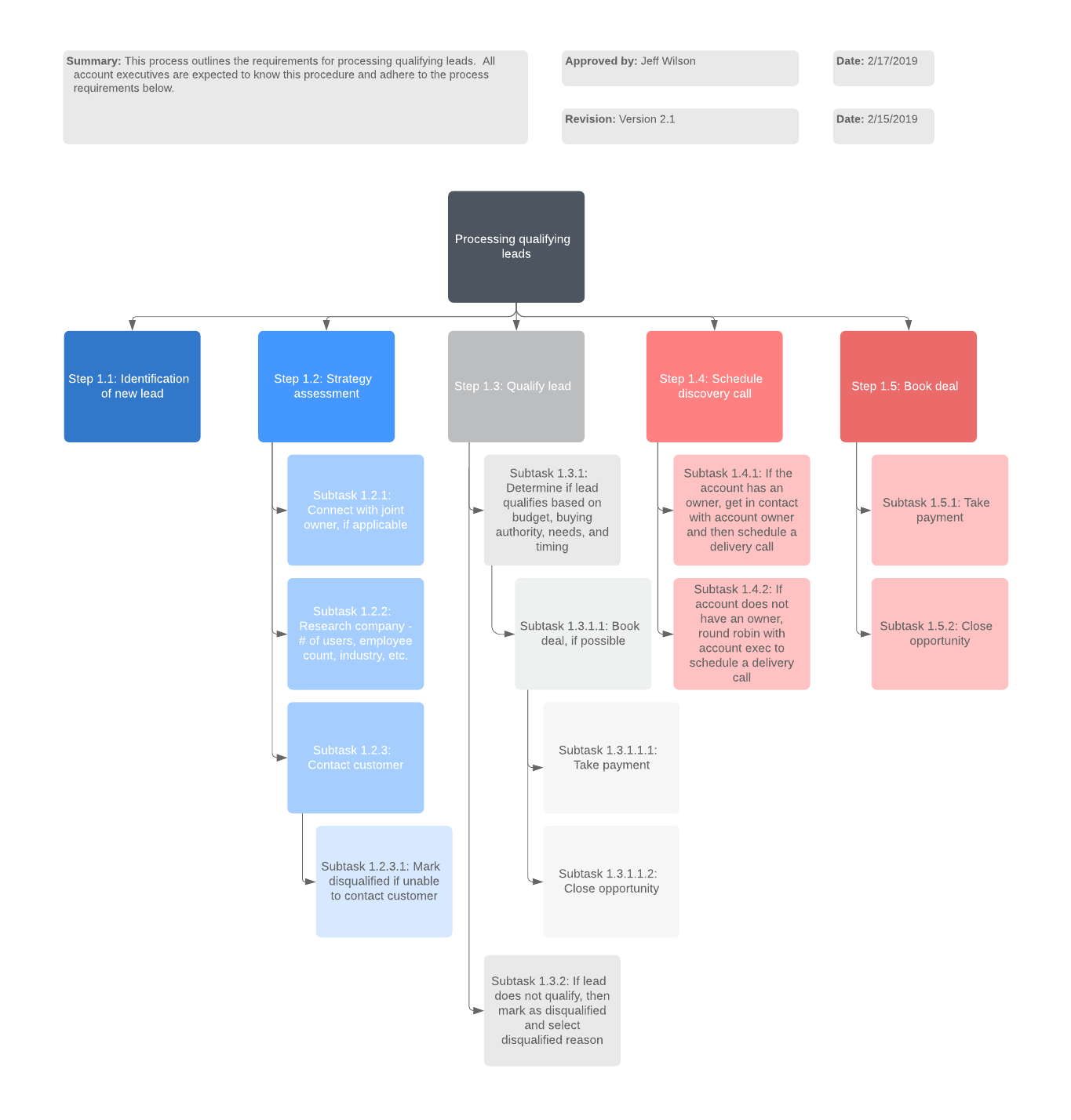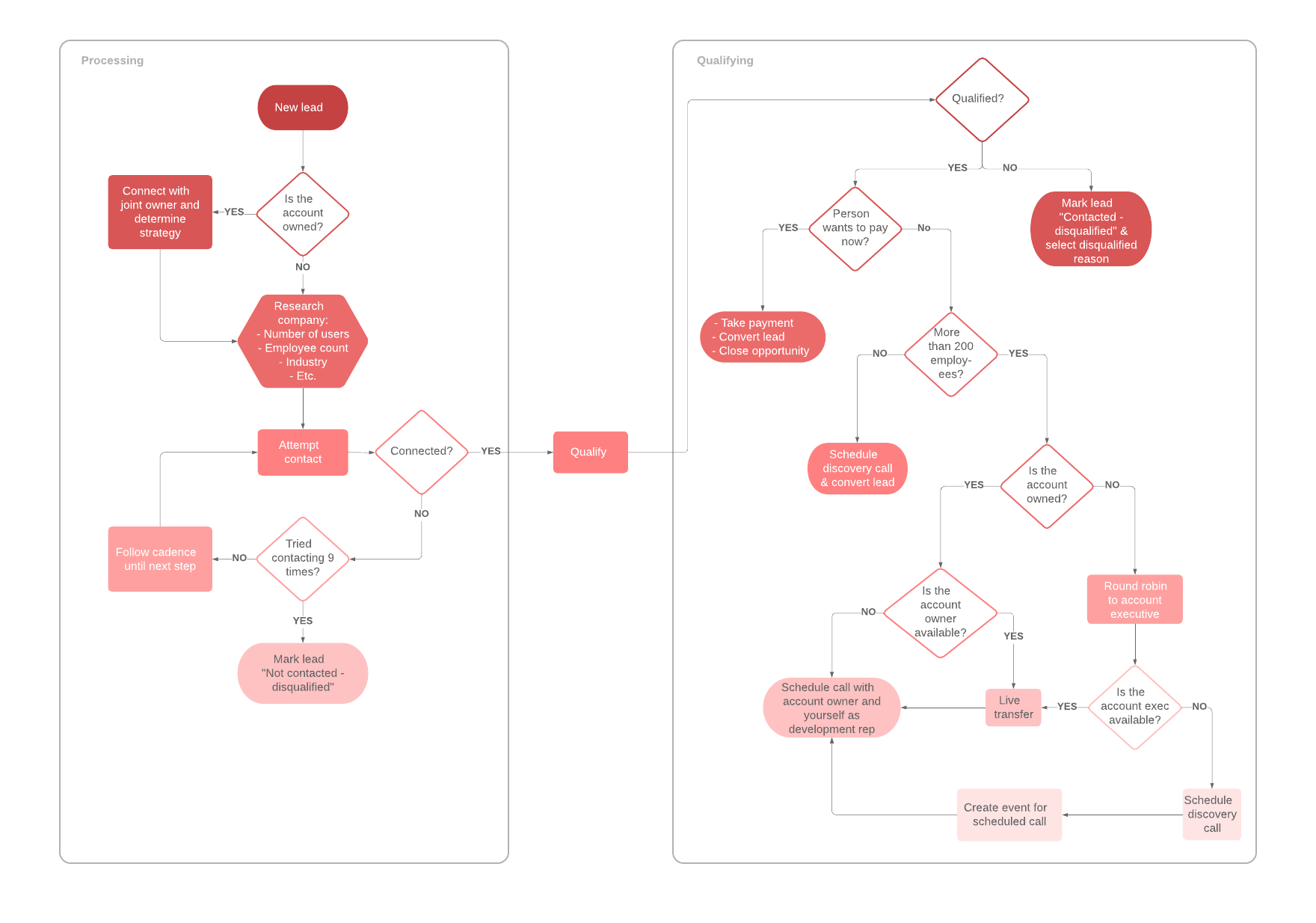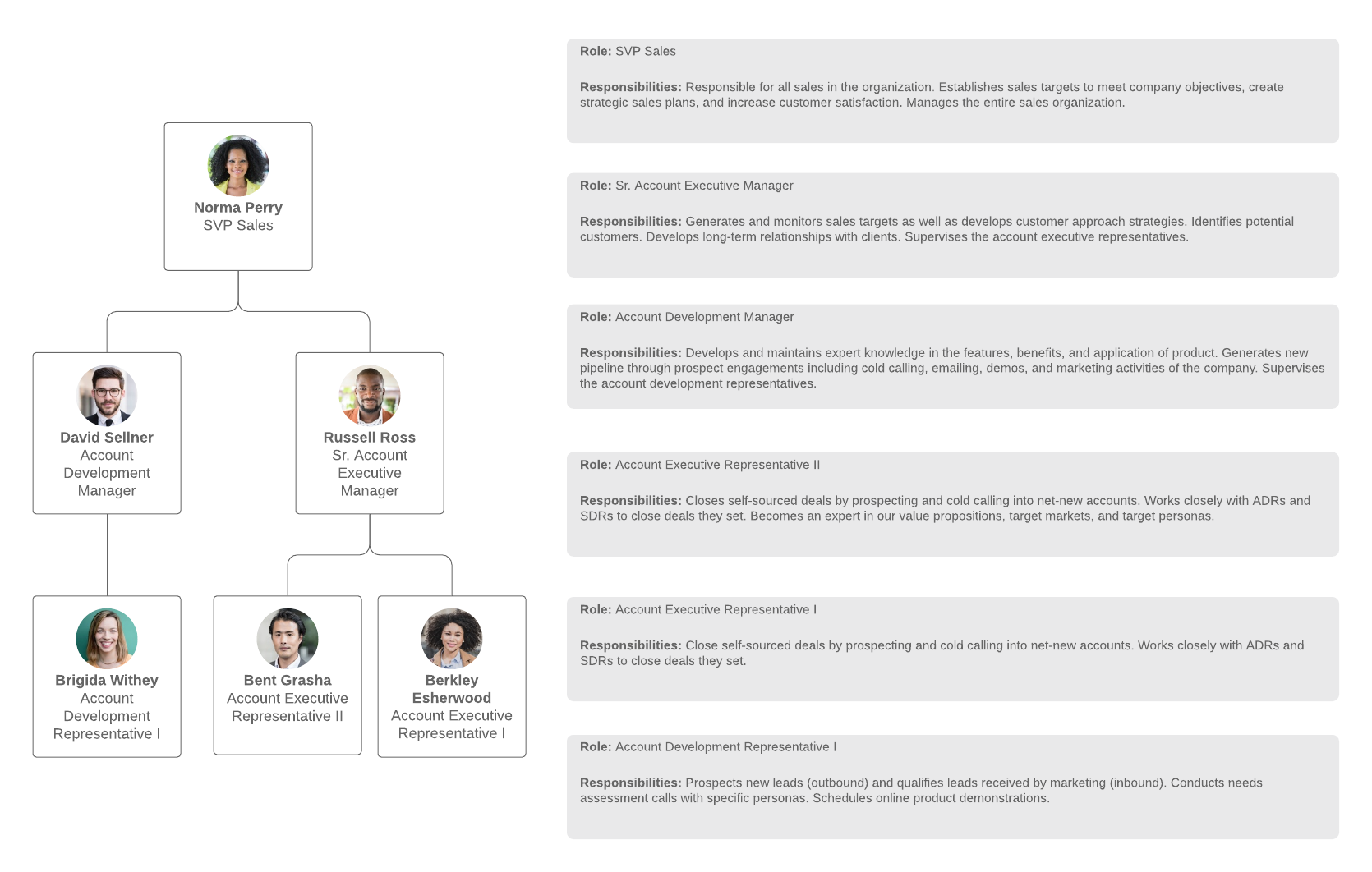
How to write a standard operating procedure that makes sense
Lucid Content
Reading time: about 10 min
Topics:
Many years ago, I was given the assignment to write a process paper in a college English class. The teacher explained that we needed to describe a process or skill that others may not know how to do. I chose to write about programming a simple four-beat pattern into a Roland TR-505 drum machine, using clear explanations and step-by-step procedures.
A few years later, I was asked to write a standard operating procedure (SOP) for providing release notes with software product releases. That sounded simple enough—all I had to do was write some clear explanations and step-by-step procedures again, right?
Wrong.
I quickly realized that writing an SOP document involves more than writing a simple process.
Below we’ll cover what a standard operating procedure is and how to write one—think of it as a SOP for SOPs.

What is the difference between a process and a standard operating procedure?
Processes and procedures each include step-by-step instructions to help you to correctly perform a specific task. However, process documentation is a high-level overview of routine operations while a standard operating procedure is more granular— adding more detail, specific assignments, and workflows to conform with company or industry standards. In other words, a process tells you what to do and an SOP tells you exactly how to do it.
For example, you don’t need an SOP to program a drum machine because there are too many variables. There are no standard drum sounds that you have to use to create a beat. All you need is a step-by-step process describing how to select a time signature, a tempo, and the specific sounds you want to use and how to arrange those sounds in a pattern that sounds good to you. This basic process leaves it up to you to unleash your own creativity.
An SOP also describes what needs to happen for an outcome but includes more detailed steps and information such as who, when, and where.
For example, let's say you need to create an SOP for people who produce release notes. The SOP could include:
- Which information should be included (bug fixes, new features, known issues)
- Which information shouldn’t be included (fixes or improvements that are not customer-facing)
- When information should be collected (how many weeks or days before release)
- Who collects the information (writer, product manager, testers)
- Which format to use for the output (HTML, PDF)
- How the review cycle works (when the document is sent for review, who reviews the document, how much time to review, how much time to implement edits)
- Who needs to approve the document (team leads, product owners, senior managers)
When to create an SOP
SOPs are important for running an efficient and compliant business. They help eliminate uncertainty about how to complete routine work and ensure the right people are doing the right tasks at the right time. While no SOP can guarantee performance, they standardize best practices across the team or organization, improving the quality and predictability of outcomes.
Here are a few reasons you may need an SOP:
- To ensure compliance standards are met
- To meet production requirements
- To ensure the procedure has no adverse impact on the environment
- To ensure safety
- To adhere to a schedule
- To prevent manufacturing failures
- To be used for training
How do you write a standard operating procedure document?
No matter what kind of business you are in, you should have well-defined SOP documents that will help your employees understand how to perform routine jobs safely, in compliance with regulations, and consistently no matter who completes the task.
No official standard operating procedure document will teach you how to write an SOP. But there are steps you can follow to organize your thoughts and plan the most effective path to standardizing your procedures.
Step 1: Begin with the end in mind
Define what the end result or the goal is for the SOP you are writing. For example, if you are writing a document that describes the procedures for closing a restaurant each night, the goal is to secure the building until the prep crew arrives in the morning.
This step does not include details such as cleaning floors or arming alarm systems. You simply want to identify what the procedure will accomplish.
All organizations have processes and procedures that are repeated daily, weekly, and monthly. As you define your goals, ask whether an SOP document is needed for that particular goal. Or, see if an SOP has already been created to accomplish the goal and maybe you just need to review it and looks for ways to improve it.
Ask yourself if there is a specific reason why this goal should be accompanied by a standard operating procedure document.
When you know what you want your SOP to accomplish, it’s much easier to write an outline and define the details.
Step 2: Choose a format
Chances are that your company already has some SOP documents that have been written for other procedures in the past. Refer to those documents as templates for preferred formatting guidelines.
If you don’t have any documents to use as a reference, try one of these ideas:
- A simple steps format: Use this format for routine procedures that are short and easy to follow. In addition to safety guidelines and other mandatory documentation, this type of format is generally a numbered or bulleted list with short, simple sentences that are clear and easy for the reader to follow.
- A hierarchical steps format: If your procedures have a lot of steps that involve decisions, you may want to use the hierarchical steps format. This is usually a bulleted or numbered list of main steps followed by a set of specific substeps.
- A flowchart format: Use a flowchart to map out and plan procedures that include many possible outcomes. This is a good choice when the results are not always predictable.
Lucidchart has a library of customizable templates to help visualize your SOP. See our examples that could be included as part of an SOP on qualifying and processing sales leads.


Step 3: Ask for input
Get the team together and ask them how they think the job should be performed. These are the people who you are going to ask to adhere to the SOP, so you want to be sure that it makes sense to them and that all the necessary tasks are included.
There will be multiple drafts and reviews—make sure to invite your team to review the drafts so they can make additional suggestions.
Step 4: Define the scope
It’s possible that the SOP you are working on is dependent on other SOPs and teams in other departments in order to be completed successfully. Determine whether it is sufficient to reference those other procedures or if you need to add them to the current standard operating procedure document. Consideer using a flowchart or a map to clearly define dependencies and responsible parties.
Use Lucidchart to create the documents you need to monitor and track procedural paths and dependencies.

Step 5: Identify your audience
Knowing your audience helps you determine how you should write your SOP document. Consider these questions:
- What is their prior knowledge? Are they already familiar with the organization and the procedures? Do they already know the terminology? Have they become complacent and need a refresher? You need to write to your audience’s knowledge level. Too basic and you'll waste their time on information they already know. Too complicated, and you’ll confuse them—and risk mistakes when they try to implement the SOP.
- What are their language skills? Maybe your audience does not natively speak your language. If that is the case, you may want to use more pictures than words.
- Are they new employees? When bringing on new employees, your SOP documents need to be very detailed and training-oriented. You want to ensure consistent outcomes regardless of who is performing a task.
- What is the size of your audience? Will multiple people in different roles across multiple organizations be reading the document? If so, write the procedures in a way that clearly defines who, or what role, performs each task. This helps your audience understand where they each fit into the process and why their particular part is important.
Once you determine your audience, you can use Lucidchart to delineate roles and responsibilities within the procedure, so everyone understands what tasks they are responsible for.

Step 6: Write the SOP
Write a draft of your standard operating procedure and consider including some of the following elements:
Title page
This page can include:
- The title of the procedure
- An SOP identification number
- A publication date or revision date
- The name of the role, organization, division, or agency that the SOP applies to
- Names and signatures of those who prepared and approved the procedures outlined in the SOP
Table of contents
You only need a table of contents if the document is very large with many pages. The table of contents allows easy access to specific areas of the document.
The specific procedures
This is the bulk of the document and includes the specific step-by-step procedures that need to be followed in order to successfully comply with company standards and safety regulations. This section could also include:
- A description of the scope and purpose of the SOP, its limits, and how it’s used. You can include standards, regulatory requirements, roles and responsibilities, and inputs and outputs.
- Necessary and additional details that are needed to complete each step. Discuss decisions that need to be made, possible blockers, safety considerations, and any other “what if” scenarios that may arise.
- Clarification of terminology, including acronyms and phrases that may not be familiar to your audience.
- Health and safety warnings. These warnings should be listed in a separate section, and they should accompany applicable steps within the process.
- A complete list of all equipment and supplies that are needed, where to find them, and when each will be needed.
- A troubleshooting section to cover things that can go wrong, what types of things the reader should look for, and what may interfere with the final outcome.
Step 7: Review, test, edit, repeat
After you have written your standard operating procedure document:
- Send a draft of the SOP to team members for review. Have them note grammatical and technical errors.
- Test the document yourself to ensure that you achieve the desired outcome.
- Have other team members test the procedures to ensure that the language is clear, can be easily followed, and can be completed successfully.
- Incorporate relevant edits and suggestions to improve the document.
- Repeat these steps until the document is approved and accepted by all stakeholders.
- Implement the SOP. Make it easily accessible to those who need it to do their jobs.
You should review the SOP every six to twelve months or as necessary to identify areas where it can be improved and to reflect any changes that have been made to current procedures.
How Lucidchart can help you write standard operating procedures?
Standard operating procedures can quickly become large and unwieldy documents with wordy, technical information. This makes it harder to understand how processes fit together and implement the instructions. But visual templates can help stakeholders get out of the weeds and see the big picture.
Lucidchart is a web-based application that lets you create any diagram and collaborate with anybody, anywhere, and at any time. Diagram a flowchart, swimlane, or a business process model to help you visualize and document your processes. Using visualizations can help you more easily understand the procedure’s flows than a written checklist or paragraph.

Get started with a free Lucidchart account today.
Sign up freeAbout Lucidchart
Lucidchart, a cloud-based intelligent diagramming application, is a core component of Lucid Software's Visual Collaboration Suite. This intuitive, cloud-based solution empowers teams to collaborate in real-time to build flowcharts, mockups, UML diagrams, customer journey maps, and more. Lucidchart propels teams forward to build the future faster. Lucid is proud to serve top businesses around the world, including customers such as Google, GE, and NBC Universal, and 99% of the Fortune 500. Lucid partners with industry leaders, including Google, Atlassian, and Microsoft. Since its founding, Lucid has received numerous awards for its products, business, and workplace culture. For more information, visit lucidchart.com.
Related articles
Process map templates and examples
Show—don’t tell—the steps of your workflow with a process map. You can get started quickly with our process map templates!
The basics of documenting and analyzing your as-is process
Learn more about documenting your as-is process. Studying your current state helps organizations document, track, and optimize processes for better performance, greater efficiency, and improved outcomes.
